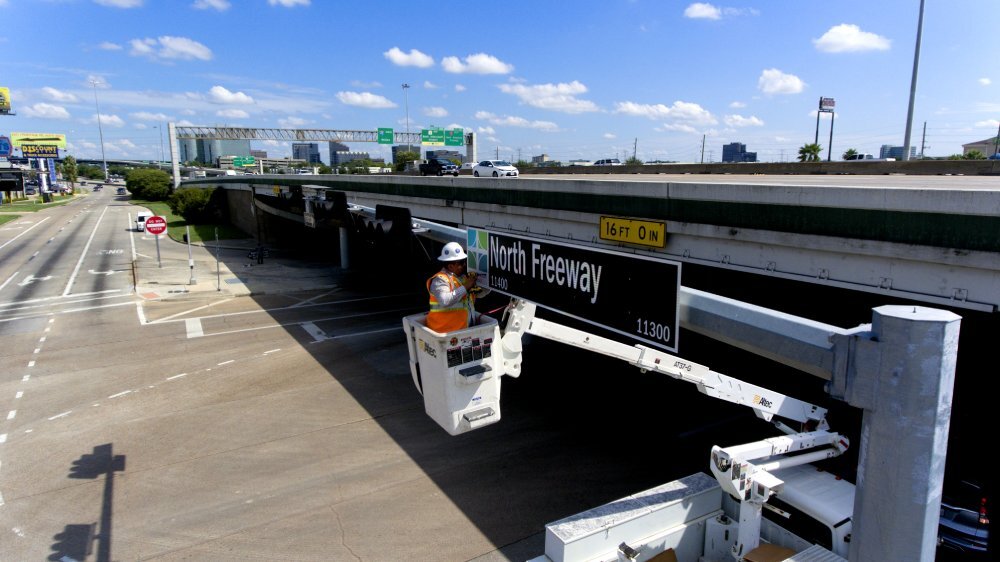New Developments in the District – More Logistics On The Way
In the Fall 2023 edition of the NHD CRE Market Report, we noted how the District’s CRE profile has shifted from office to logistics, with the District now having approximately 18 million square feet of industrial/flex space as compared to about 10.5 million square feet of office space. This trend continues.
District staff constantly track new developments in the area, and most of these have been industrial/flex projects. The District is currently tracking five projects that have been announced or are in some planning stage. Four of these five projects are logistics-related, with the fifth being a new Yes Prep elementary school. They are also dispersed geographically, with two projects in the District’s northwest quadrant and one each in the northeast and southeast quadrants.
An interesting common feature of all four industrial projects is their size. Due to overbuilding and financing challenges, the days of projects greater than 500,000 sq. ft. are gone. More common are small to mid-size projects. The four current logistics projects tracked by the District fall into these categories. They range from a standalone 20,000 sq. ft. project to a mid-sized 378,000 sq. ft. project, and two right in the middle at roughly 150,000 sq. ft. Larget projects carry an expectation that they will be divided for multiple tenants.
This move to smaller logistics projects is also reflected in lower availability for smaller buildings than projects over 100,000 sq. ft. Data from CoStar (see below) shows availability for projects of 25,000 sq. ft. or less to be just above 6% as compared to the availability of just over 12% for projects over 100,000 sq. ft.

While one of the five new projects is an office-to-industrial conversion, the other four are all occurring on raw land. While these developments take raw land off the market, significant tracts remain available for development in the District.
Office Re-Pricing and the North Houston District
As many who follow the office market know, and even those who read the business press, significant changes are underway in the office market. The combination of higher interest rates and fundamental shifts in how people work are sending reverberations through the office real estate market. Either of these factors alone would be hard for a market to absorb, but the two together will have profound effects.
Rates, of course, rise and fall and as of late we have already seen the 10-year Treasury Bond drop from just over 5% to about 3.9%. The rate of the 1-year treasury is a key rate in the world of commercial real estate financing. This is a welcome improvement.
What is staying the same is the occupancy of office buildings. Kastle Systems, a firm that provides security services to many commercial office buildings, has been producing a data series since COVID started that tracks the current rate of office attendance relative to pre-COVID days. While Texas cities top the list of major American cities with the highest return rates of workers to their offices, the bad news is that this rate is seemingly plateauing at roughly 60% (see below; Houston is in yellow). In practical terms, this means that when renewing their leases or moving to new buildings, firms don’t need as much room as before and are signing leases for smaller spaces. This has boosted the vacancy rate of office buildings. And most experts agree that this is a permanent change.

Re-pricing is just getting underway in several major metropolitan markets and is likely to be a years-long process. It is currently underway in Houston. CoStar data for the past year indicate that the rate of re-pricing has been greater in the overall Houston market than in the North Houston District. In the Houston market, Class A office market prices have dropped about 6.7%; in the North Houston District, they have fallen 4.3%.
In the larger Class B/C market, prices in the Greater Houston market have dropped 6.8%, whereas in the District, they have dropped just 2.5%. This is likely because many office buildings in the District were re-priced years ago when the area had the oil and gas slump of 2015/2016. Hence, office values in the District are holding up better than in the City overall. This relative price stability will hopefully mean a more sustainable office market.
Questions? Connect with us.
Robert Fiederlein
Vice President Planning and Infrastructure
Direct: 281-874-2132
Mobile: 713-816-5413
rfiederlein@www.northhouston.org

